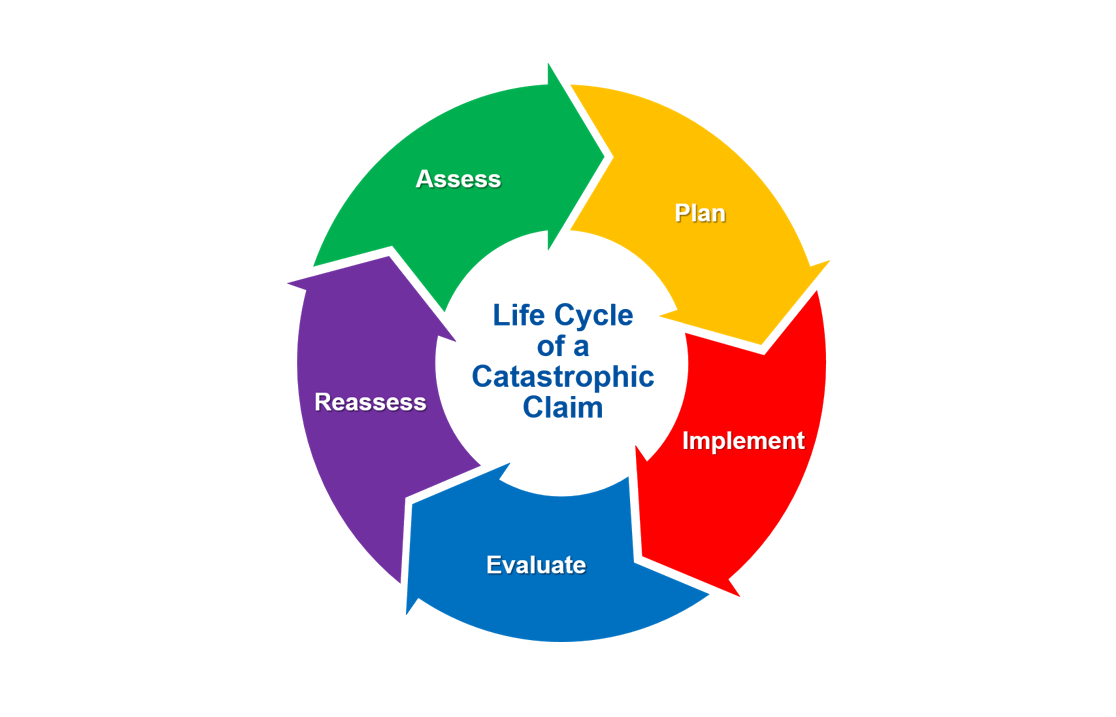The Life Cycle of a Catastrophic Claim
Requiring particular sensitivity, effective management of a catastrophic claim can prove challenging. Follow these core processes when developing your approach.
August 2, 2021

Catastrophic claims handling requires significantly more communication than a standard workers’ compensation claim, keeping all stakeholders updated on the injured worker’s progress while also managing costs and additional resources.
“Handling these claims with sensitivity and empathy is absolutely key,” says Jessica Unser, Senior Claims Manager at Safety National. “But it’s critical that we strike a balance, remaining focused on our role and staying in control, driving the claim based on necessity and case law.”
To help achieve an approach based on these best practices, there are many benefits to including the following five core processes within the catastrophic claim’s life cycle.
1. Assess
Prioritizing your workloads when handling these types of claims is critical to a smooth process. The first step should always be to assess the incoming loss and identifying the stakeholders that should be involved. All stakeholders should have the opportunity to review the medical records, paying particularly close attention to any roadblocks or concerns that may develop on a claim. Having the right resources in place can make all the difference in preventing potential roadblocks and aiding in the recovery process.
2. Plan
Once stakeholders have been established, developing a plan of action should be the next step. The short- and long-term goals of the claim should be considered within the planning process. To activate your action plan, you will need to reassess any additional resources and ensure that all stakeholders remain flexible. Everyone should be able to switch gears if there is a change in the injured worker’s condition or status.
3. Implement
After creating your action plan, you are ready to start the implementation process. When completing the necessary referrals and assignments for the case, you will need to invite all key stakeholders to the table. This assists in building team relationships, and it allows all parties to work closely together, developing a team approach with theinjured worker, field case manager and third-party administrator (TPA).
4. Evaluate
Every catastrophic case involves a lot of evaluation, whether it be evaluating the needs and urgency of the injured worker’s situation or the needs of an adjuster. To make the evaluation process more efficient and cost-effective, assess the claim costs and exposure to prepare reserves on file. Costs can rise rapidly in a catastrophic claim, and reserving within weeks of the new loss is essential.
5. Reassess
If an injured worker’s condition changes, it can involve reassessing all resources and gathering the team of stakeholders to collaborate and prepare for these changes. This process also consists of working toward the claim’s long-term goals, which should be an ongoing process throughout all stages of the claim. Ensure that all parties are aware of the significant exposure of the claim so there are no financial surprises when the reserving process is completed.

























